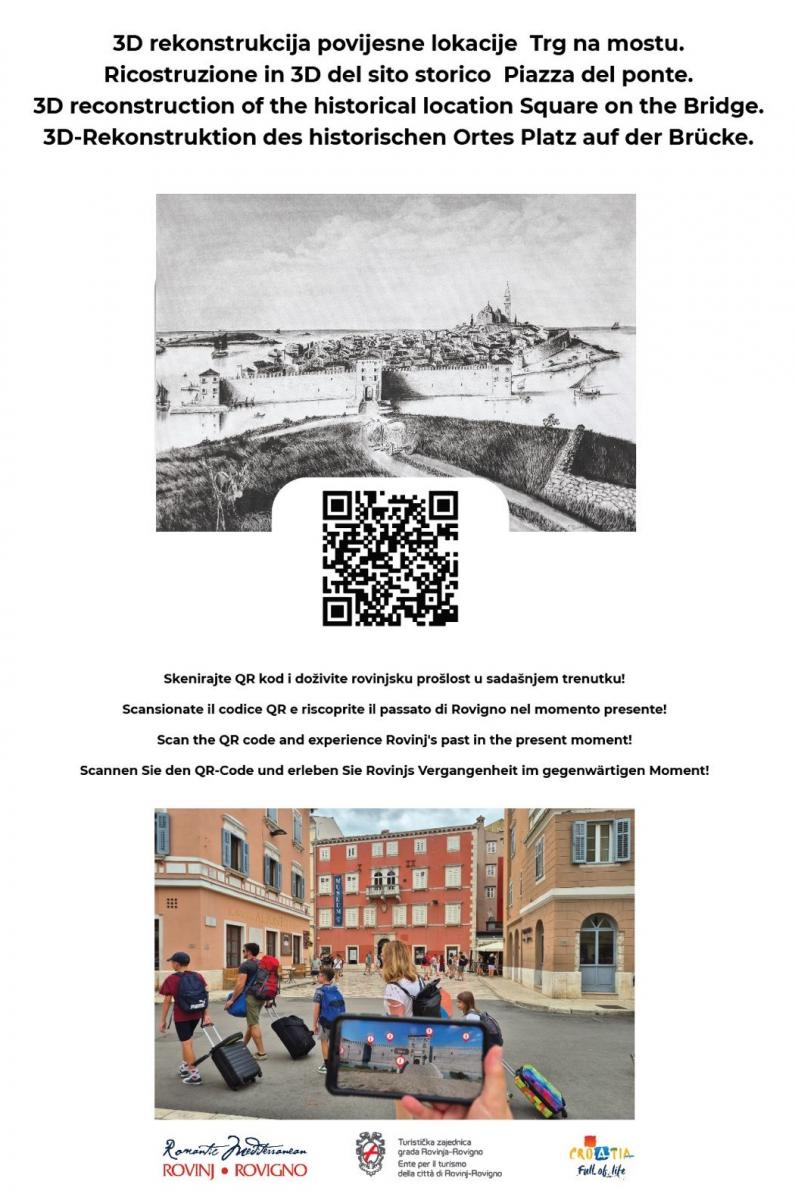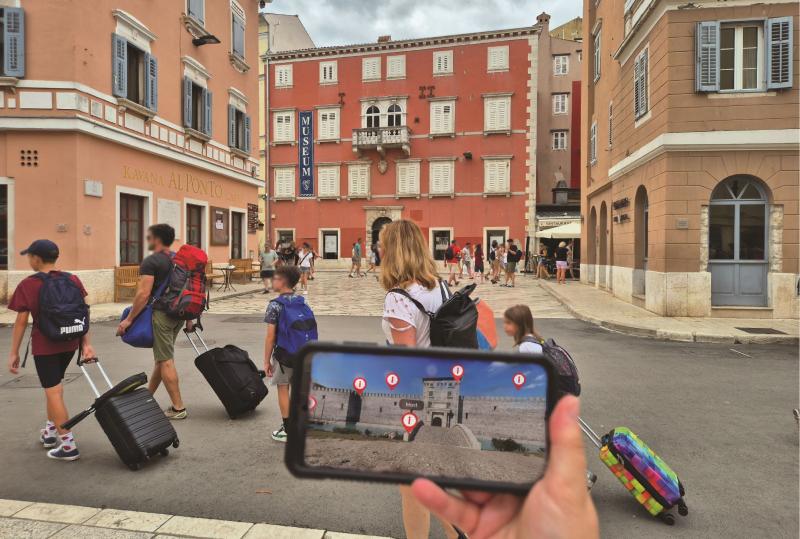3D Reconstruction of Historic Sites in Rovinj
28.7.2025
Based on the Agreement on Project-related Association of the Tourist Boards of the Town of Rovinj-Rovigno and the Municipalities of Bale, Kanfanar and Svetvinčenat, a project entitled "Creating 3D Reconstructions and an Extended Reality Web Application for the Virtual Presentation of Historic Sites and Buildings on the Territory of Rovinj, Bale, Svetvinčenat and Kanfanar" has been developed. The project was co-financed by the Croatian National Tourist Board through the Joint Tourist Boards Fund in 2025. The project includes 3D reconstruction of the most significant historic sites, i.e., Trg na mostu (Square on the Bridge) and the Railway Station (Rovinj), the Soardo-Bembo Palace (Bale), Mrkat na Placi (Market on the Square, Svetvinčenat), and the Ruins of the Medieval Town of Dvigrad (Kanfanar). This innovative project allows the visitors to revive the past and immerse themselves in history thanks to modern technology, thus providing a unique and educational experience. The goal is to combine the rich cultural and historical heritage with modern technological solutions and, by doing so, raise the level of the tourism offering and attract visitors of all generations.
In Rovinj, one can discover what particular sites looked like when Rovinj was an island connected to the mainland only by a bridge, or at the time when it represented one of the strongest industrial hubs. A walk through the town is now enriched with an extended reality experience allowing everyone who passes through Rovinj to find out what particular sites looked like in the past.
Information points with QR codes, enabling immediate access to a virtual reconstruction of the site, have been installed at two sites in Rovinj, namely Trg na mostu (Square on the Bridge) and the Railway Station – the two sites that have played, each in its own way, an important part in the development of Rovinj as we know it today. At several key points at each site, the web application allows the visitors to experience a 360° virtual reconstruction of the site’s appearance in the past using their mobile devices, via only a web browser, without the need to download or install additional applications. After scanning the QR code, a digital reconstruction of the site’s appearance in the past is shown on the mobile phone, along with POIs (Points of Interest) representing the key locations within the virtual presentation and providing additional information, such as textual descriptions, historical photos and 3D models of important parts of buildings and artefacts. The Square on the Bridge thus turns into the very bridge that stood there more than 400 years ago as the key link connecting the mainland and the island on which the town, encircled by walls and accessible only via the bridge, developed. Considering that the bridge was also regarded as a symbol of the town, the reconstruction of this square is truly valuable in that it enables the presentation of something almost unrecognizable today and allows the visitors to grasp the significance of the bridge and find out what everyday life was like at that time. There are very few photos and little information about the appearance of the town in that period, which makes it difficult for the visitors to imagine what it looked like in the past. The reconstruction is based on the drawings by Diego Giuricin from Rovinj presenting the town walls at the beginning of the 17th century.
On the other side of the town, the application shows the Railway Station, one of the most important historic sites in Rovinj. To be specific, the Kanfanar – Rovinj railway branch line was a 20,561-metre-long line that served to connect the economic hubs of the Austro-Hungarian Empire with the town of Rovinj, a strong industrial hub at the time. The construction of the branch line and the Rovinj Railway Station began in 1873. The first train from Kanfanar arrived to Rovinj on 19 August 1876, while the first train from Rovinj left for Kanfanar one day later. The line operated until 20 October 1966. The reconstruction of this site revives this part of the town and gives the visitors the opportunity to see what the station itself, the trains and the railway line looked like at the time. In this manner, the old railway station, which is no longer in operation, becomes a living reminder of an important chapter in the history of Rovinj that can now, thanks to XR technology, be re-experienced in the full historical context.


